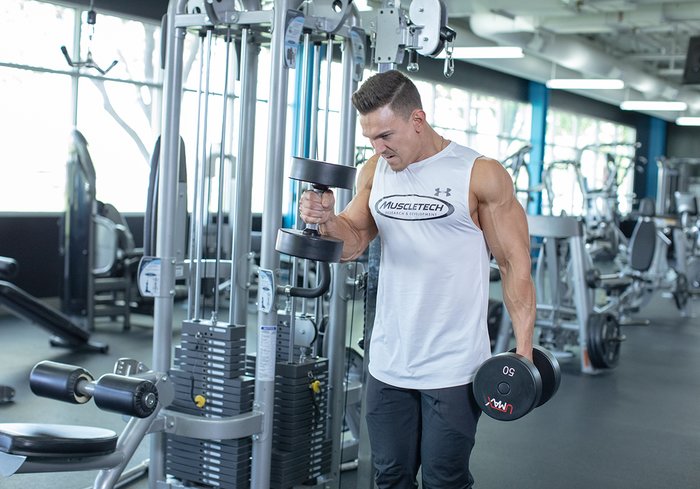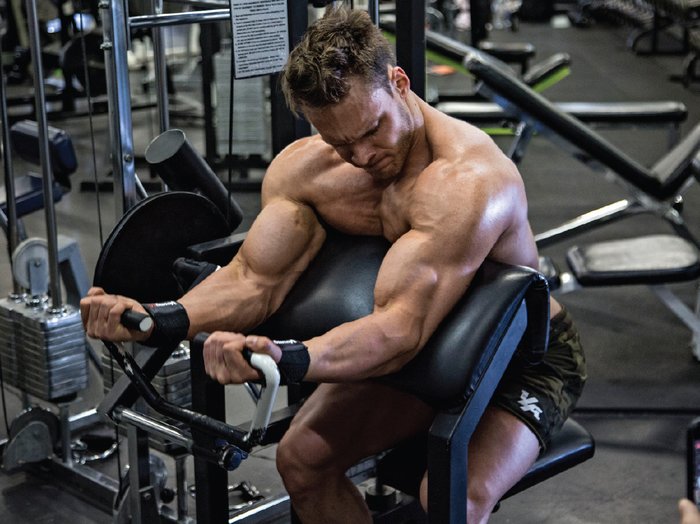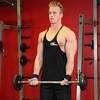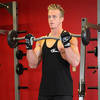Michael Berg, NSCA-CPT
December 03, 2018
•
4 min read
Is there a more satisfying feeling in weightlifting than fully engaged biceps during a curl? If you find it, let us know. Meanwhile, we’ll keep looking forward to arm day as the cherry atop any training split.
Here, we share five tips for making an already great arm day even better. These approaches and exercises will help you coax out more size, detail, and proportional development than you ever thought possible.
Tip 1: Get a Grip on the Perfect Biceps Workout
Maximizing your biceps development takes more than some curls tacked onto one of your regular workouts each week. You’ll want to be more strategic by taking advantage of a key difference between biceps and your larger body parts.
“Like calves, biceps are a slow-twitch, red-muscle-fiber-dominant body part,” says MuscleTech-sponsored athlete Fabian Petrina. “They recover more quickly, which is why I recommend training biceps twice per week: once with back and once with shoulders and triceps.”

The biceps complex is actually made up of four distinct areas. Dedicate some of every workout to hitting each portion. Here’s how to hit each area with simple grip changes in your curls:
- Biceps brachii short head: Wide grip
- Biceps brachii long head: Narrow grip
- Brachialis: Neutral grip (palms facing)
- Brachioradialis: Pronated grip (palms down)
Tip 2: Bash the Brachialis
The first thought about the biceps is all about the peak, and the higher, the better. That’s a function of your genetics (so thank your parents, either sincerely or sarcastically) and the development of the aforementioned long head of the biceps brachii.
That said, you can also build the brachialis, that muscle running beneath the biceps brachii, thus giving a bit more girth to the upper arm, as well as a higher platform for that peak to stand on. The brachialis, again, is best activated when you’re curling with your palms facing one another. The cross-body hammer curl and cable rope hammer curl are two movements that employ this neutral grip.
Tip 3: Shift Your Lifts
Positioning your elbows in different places in relation to your body alters the stimulus as well. During most curls, your elbows are at your sides. This is a solid biceps-building position, but you can emphasize the short or long head by moving your elbows in front of or behind your body.
For instance, doing an incline dumbbell curl will put your elbows behind you, putting the long head of the biceps brachii into a stretched position. This makes for a stronger contraction. You can also accomplish this stretching during a drag curl, allowing your elbows to drift behind your back as you lift the bar up.
On the flip side, during a preacher curl, your elbows are out in front of your body. This emphasizes the short head. You can further promote the activation of the short head by doing a wide-grip move like EZ curls holding the outer angle, or a simple wide-grip barbell preacher curl.
Tip 4: Ditch Your Doubts About Machines
Big arms are built with basics: close-grip bench presses, skullcrushers, standing curls, and the like. But the old-school view of machines as inferior to barbell and dumbbell classics should be tucked away with your Zubaz and rag tops, never to see the light of day again. Machines have come a long way from the days of awkward ranges of motion and rickety construction.

The leverage and fixed range of motion that machines provide generally mean you can handle a bit more weight than you would doing a similar free-weight version. While this doesn’t trump the idea of calling on ancillary muscle groups to stabilize your body as you do during a barbell or dumbbell exercise, it does provide an additional stimulus variant for your workouts. A complete biceps workout should involve both modes of movement. You should make use of the preacher curl machine in particular.
The preacher machine takes the same premise as barbell and dumbbell preacher curls and adds the fixed range of motion and ease of a machine. It’s perfect for a dropset finisher on the tail end of your workout, but does just as well as a higher-weight, lower-rep anchor movement near the front end of a biceps routine.
Tip 5: Pair Up for Maximum Pump
Supersetting biceps and triceps exercises is a popular method for attacking an arm day. By going back and forth between these two complementary body parts, you’ll pull more blood into the upper arm, enhancing the pump. Since you’ll be resting the triceps when the biceps is working and vice versa, it will cut down the time spent waiting around as you recover for the next set, therefore upping the intensity.
Here’s a sample routine you can try. Move as quickly as possible between the exercises within each pairing (no rest), and rest only 30-60 seconds between supersets.
2
Superset 2
Barbell or preacher curl.
4 sets, 6-8 reps
from Weight Loss Insider https://ift.tt/2BSGwYg
via Best Weight Loss Supplement



0 comments:
Post a Comment